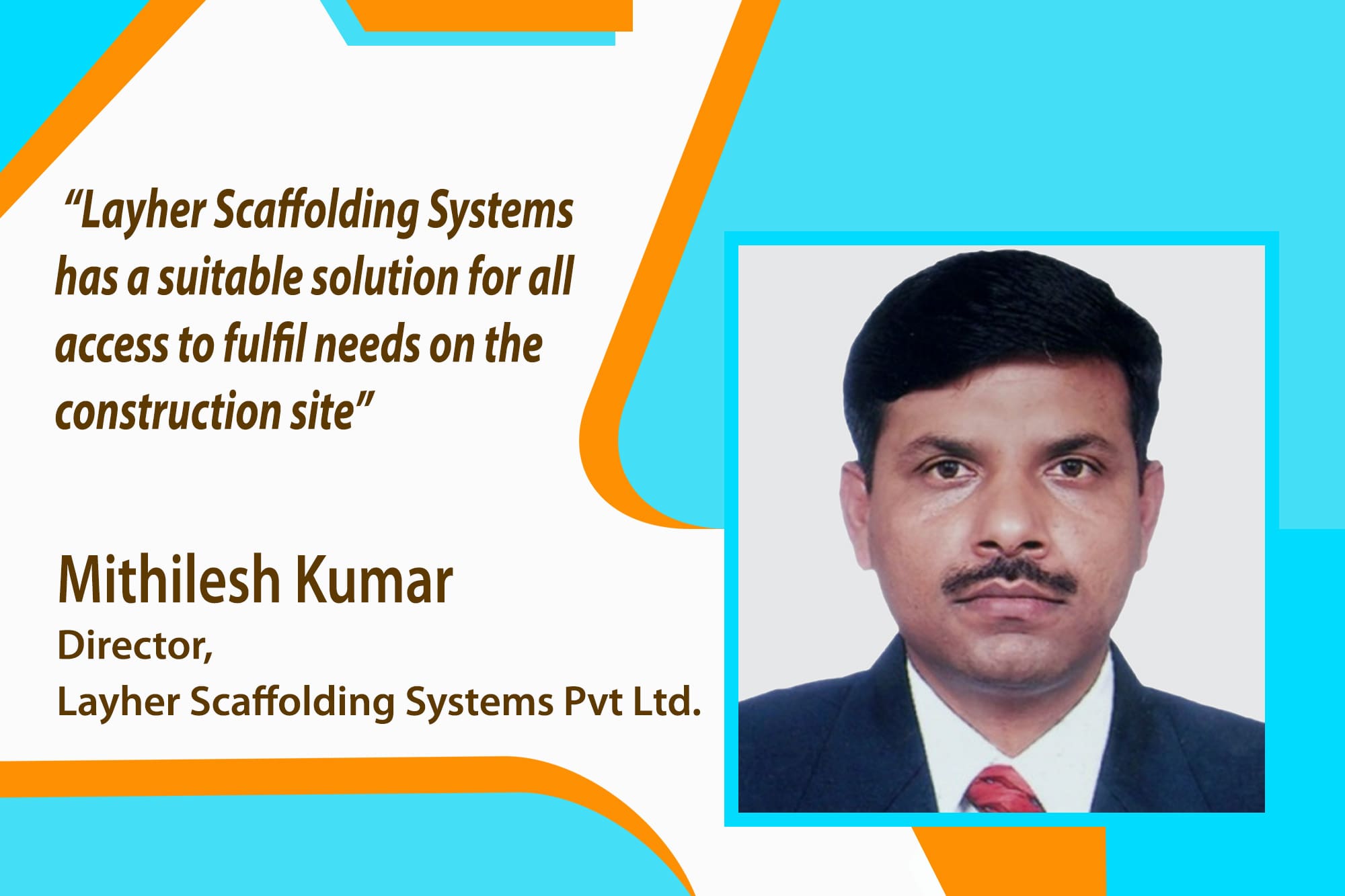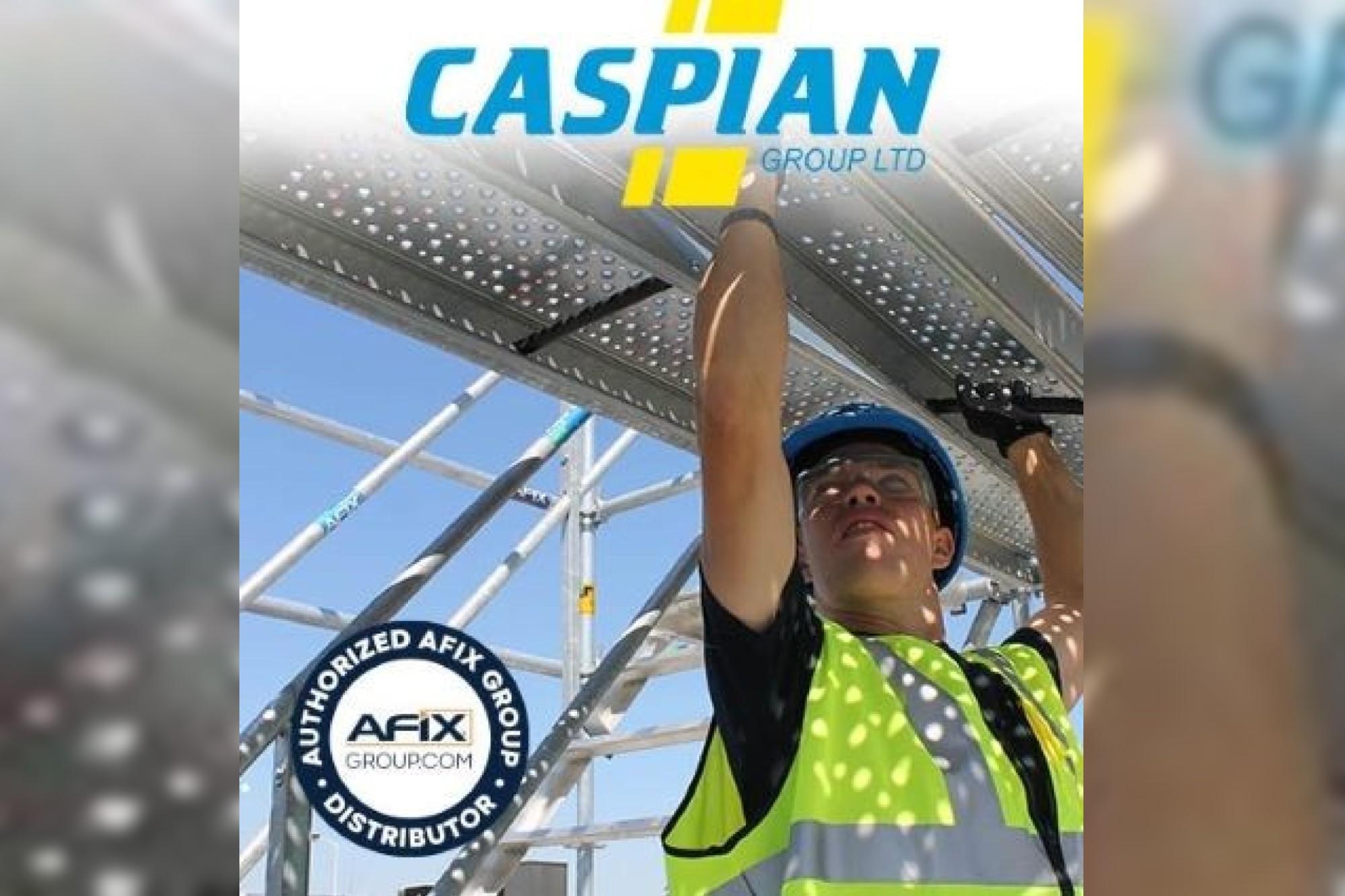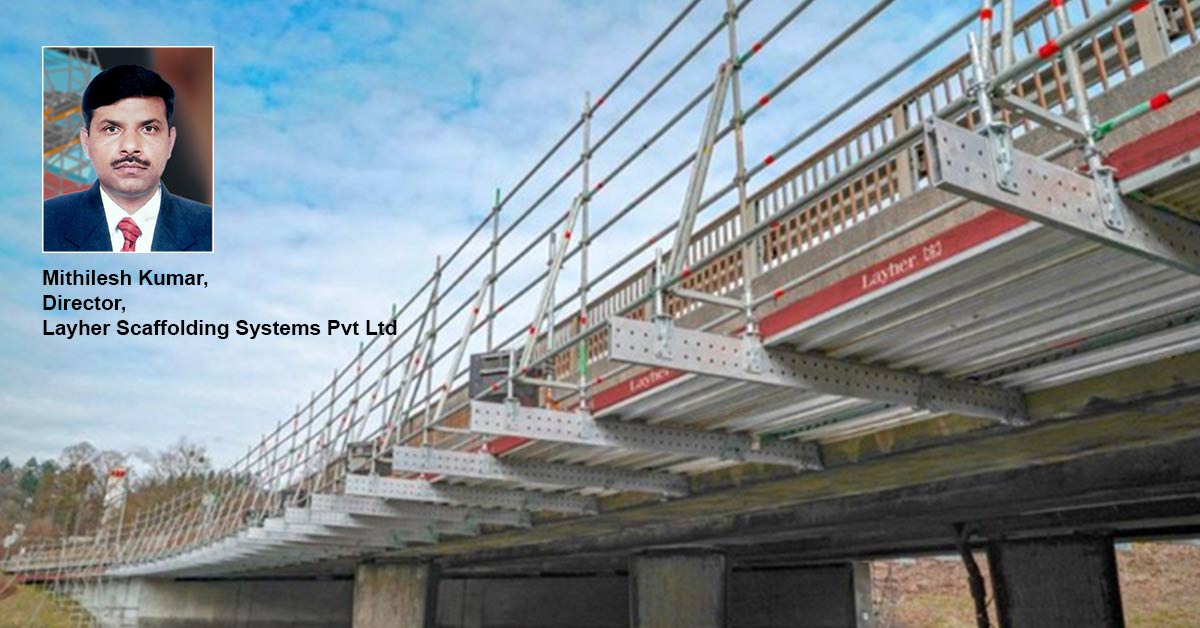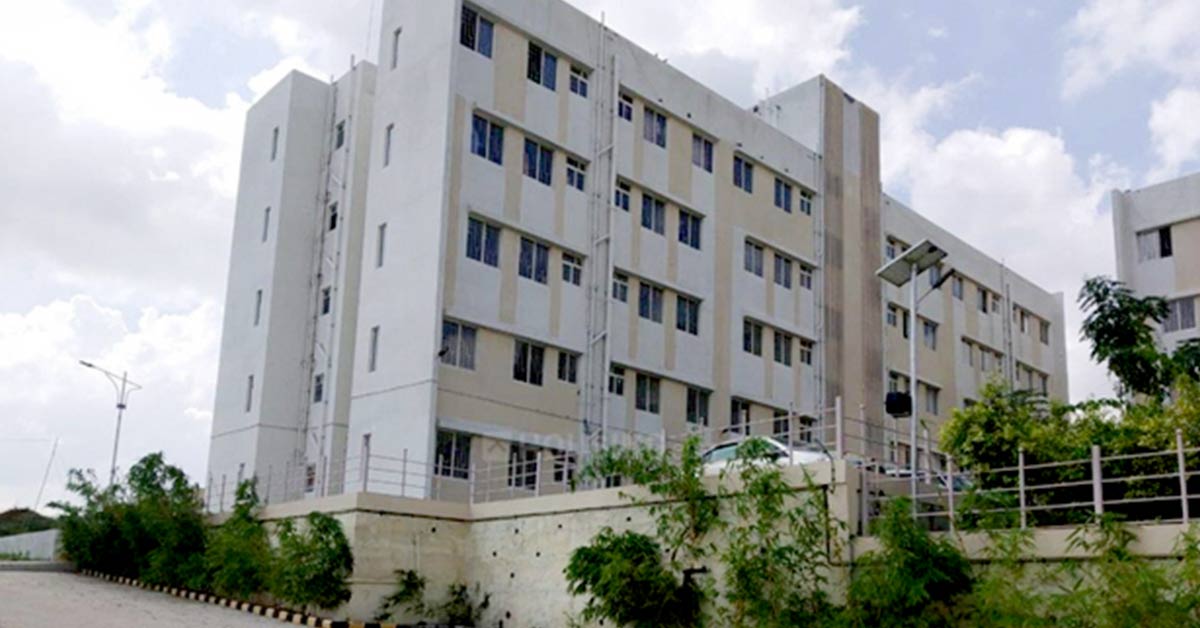PERI: Creating Landmarks with SCS Climbing Systems
By Edit Team | March 15, 2018 1:02 pm SHARE
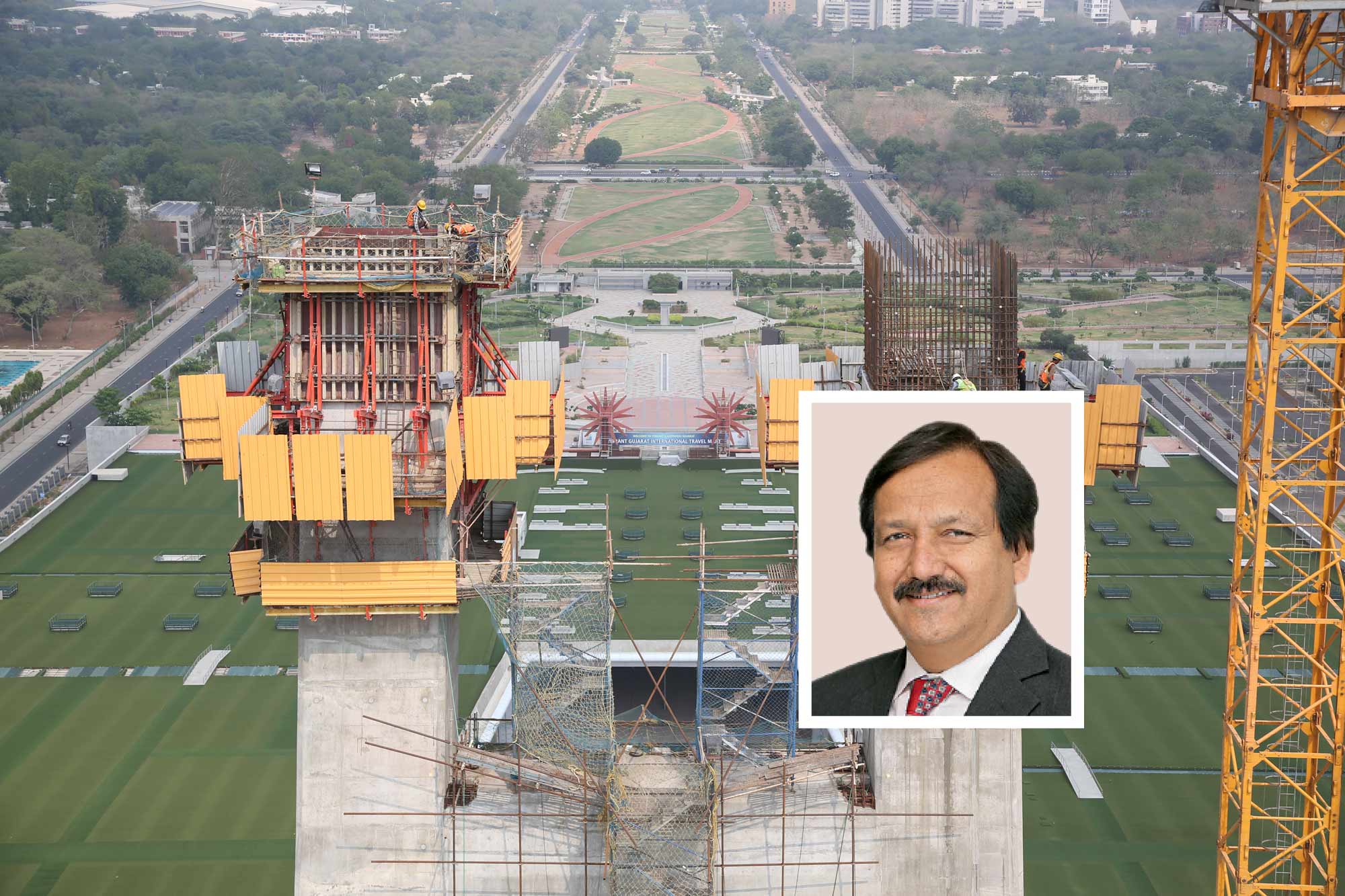
With growing requirement of high-rise structures, formwork construction methodology also needs to evolve. Climbing system is one such example of innovation in formwork technology.
Why Climbing Formwork
With rapid growth of urbanisation, high-rise structures will be seen everywhere across India. Modern construction demands technologies which are faster, safe and innovative. Conventional formwork systems may no longer able to handle today’s challenges of high-rise construction. With growing requirement of high-rise structures, formwork construction methodology also needs to evolve. Climbing system is one such example of innovation in formwork technology. The development of the climbing formwork systems began with PERI in year 1972. For the construction of the Dresdner Bank building in Mannheim in 1972, PERI used large formwork elements on a retractable climbing scaffold for the first time.
What is Climbing Formwork
Climbing system are used for the construction of vertical as well as inclined structural elements at great heights, e.g. high-rise building walls, bridge piers and dams. In addition to simple scaffold platforms, there are other different climbing systems whereby brackets, platforms and formwork are connected to form securely mounted units. These climbing units can be lifted as one unit to the next concreting section after striking has taken place.
With the crane-climbed form work, units are moved by crane and attached to climbing anchors which have been concreted in advance. If a hydraulic climbing device lifts the units to the next storey, then this is called self-climbing formwork.
For different building shapes and tasks, optimised system variants have also been developed: climbing systems for facade areas, building cores and shafts as well as inclined bridge pylons. Climbing protection panels, which serve as a wind shield and anti-fall protection,complete the product portfolio for ensuring safe and comfortable working conditions at great heights.
How self-climbing formworks are assembled
Step 1: Use of the self-climbing system on the first casting segment.
Step 2: Mounting of the finishing platform and installation of the self-climbing hydraulics.
Step 3: Dismantling the intermediate climbing shoe from the finishing platform.
Step 4: Concreting of the standard cycle with the self-climbing formwork.
Application areas of climbing formworks
Climbing system are used for the construction of vertical as well as inclined structural elements at great heights, e.g. high-rise building walls, bridge piers and dams.
A success story
With 10 years of existence in India, PERI India has executed large number of iconic projects. One of the iconic project is Mahatma Mandir, where epitome of PERI formwork engineering excellence was demonstrated. Mahatma Mandir is a convention center and a memorial located at Gandhinagar, Gujarat. Design of the Mahatma Mandir Convention cum Exhibition Center has been inspired from and reflects the life and philosophy of the Father of the Nation Mahatma Gandhi; reflecting the prosperity of Gujarat. It is one of the biggest convention centersin India, spread over 34 acres. It was built by a reputed construction company Shapoorji Pallonji and Company Ltd in two phases. Phase 1 of Mahatma Mandir construction includes a convention centre, three big exhibition halls and small halls having conferencing facility. Phase 2 includes construction of salt mound memorial, a garden, a suspension bridge, wind mills and development of parking space. Its planning and design is environment friendly.
A memorial dedicated to Mahatma Gandhi was one of the highlight of the project constructed by Shapoorji Pallonji and Company Ltd. A suspension bridge is built in memory of the Dandi March. A concrete dome structure is constructed representing salt mound houses a museum, library and research center. Suspension bridge was constructed to connect memorial and exhibition area.
It was first such challenging Bridge Pylon project for PERI India due to its sloped profile. PERI India being world leader in climbing system technology was preferred as formwork solution partner to execute this iconic project.
PERI SCS Climbing System is being used for inclined pylons which are inclined at 15 degrees. Due to large size of pylons through ties are not possible and SCS System is effectively used to take entire load from each pour and safely transfer it to the existing structure. With the SCS 250, the formwork can be retracted upto 62 cm by means of the carriage without a crane. This facilitates concrete reinforcement work, assembly of the climbing anchors and setting as well as striking of box-outs.
Project was completed with best-in-class engineering and execution. Project was directly monitored by the Prime Minister’s Office and efforts and expertise of PERI system was well appreciated.
Author
Raj Lakhani,
Managing Director,PERI (India) Pvt Ltd
Cookie Consent
We use cookies to personalize your experience. By continuing to visit this website you agree to our Terms & Conditions, Privacy Policy and Cookie Policy.



